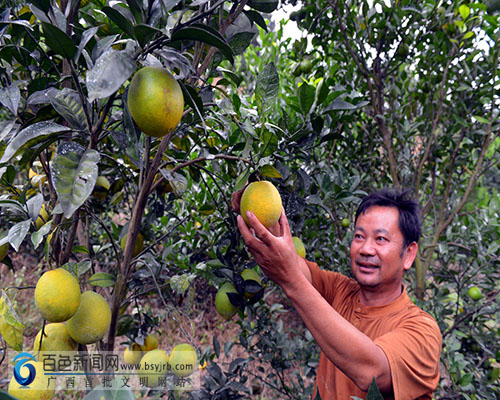Accurate understanding of poverty standards
At present, China takes the per capita annual net income of farmers of 2300 yuan (the same price in 2010) as the national poverty alleviation standard. Taken together, this standard is reasonable. However, there are also some misunderstandings in society. for example, some people directly convert 2300 yuan into the exchange rate without considering the price changes after the base year, mistakenly thinking that the poverty alleviation standard of our country is only about 1 US dollars per person per day. Some people directly compare 2300 yuan with the poverty line of tens of thousands of dollars in developed countries, and think that the poverty rate of 5.7% in China in 2015 is lower than that of about 15% in developed countries. Some people think that after "the rural poor have been lifted out of poverty", there will be no problem of poverty. Therefore, accurate poverty alleviation requires an accurate understanding of poverty standards.
Comparing the poverty standards of various countries in the world, we can see that the formulation of poverty standards in various countries, taking into account financial resources, income levels, survival needs and other factors, varies according to different national conditions. Among them, there are both absolute poverty and relative poverty, and the standard is dynamically adjusted. The former means that it is difficult to maintain a basic life, while the latter refers to the inability to live the lives of most people. Absolute poverty can be eliminated and relative poverty persists for a long time. For example, the United States, Japan and major developed countries in Europe have eliminated absolute poverty, but the relative poverty rate is still as high as 15%. Poverty standards in various countries are constantly changing with economic and social development, and there are more and more factors to be considered. Most countries conduct regular surveys and adjust poverty standards in a timely manner. Poverty measurement has shifted from one-dimensional to multi-dimensional, with food needs at the beginning, and then increased demand for housing, education and transportation, and now some non-income and consumer spending have also been included.
Through a comprehensive comparison of international and domestic poverty standards, we can see that: first, the current standards are in line with national conditions and affordability. The poverty standard formulated by our country takes full account of financial resources and poverty alleviation target groups. China has basically eliminated the poverty population in the standards of 1978 and 2008, and the current standards can basically guarantee the "two worries and three guarantees" of the poor, which is in line with the requirements of building a well-off society in an all-round way. Second, China's poverty standards are gradually converging with international standards. In 2015, the actual poverty standard in China has reached about US $2.12 per person per day, which is higher than the international absolute poverty standard of US $1.9. Third, both international poverty standards and China's poverty standards are constantly adjusted. The World Bank's absolute poverty line was announced four times, from $1.01 per person per day in 1990 to $1.90 in 2015. China's poverty standard has been adjusted three times, from 206 yuan per capita net income in 1986 to 865 yuan in 2001 and 2300 yuan in 2010. Fourth, timely adjustment of standards will benefit both the people and the country. The standard change is for the benefit of the people, such as covering an additional 140 million people in 2011.
As the per capita GDP of China has reached 7800 US dollars, which belongs to the upper-middle-income country, the World Bank recommends that China use the general poverty standard of 3.1US dollars in developing countries. The author believes that the next step can be gradually in line with this international general poverty line after the completion of the task of building a moderately prosperous society in an all-round way and getting rid of poverty. However, if China's poverty standard is close to the international poverty line of US $3.1 in 2020, it will need an average annual growth rate of about 7% in the next five years. Taking into account factors such as price changes, China's poverty standard has grown at an average annual rate of only 3% over the past four years. Therefore, some of the necessary development needs of poor families need to be gradually included in the calculation. It is suggested that the state should encourage qualified areas to gradually publish more appropriate standards in the light of rising prices and the development needs of poor families.
- Prev

As long as you are diligent and willing to work, you don't have to worry about making money.
As long as you are diligent and willing to work, you don't have to worry about making money.
- Next

There is little chance of wheat policy adjustment next year.
There is little chance of wheat policy adjustment next year.
Related
- A course of planting techniques and methods on how to grow carrots
- How to plant the latest tulips?
- Is it better to pick tea in the morning or in the afternoon? When is the best time for tea to be picked? what is the third or fifth tea?
- Launch Yuanxiao Happy combination Haocha + Tea Yuan healthy Taste
- Penghu Tourism "Fireworks 20 Parade with You"
- 2022 West Lake Happiness holds "Digital Revitalization Voucher" and draws iphone13 and laptop.
- Banqiao Fuzhou social houses are designed to change start-up combined with police elimination to create a safe and livable environment
- The convenient measure of "mechanical weeding" in Xinbei has been abused and the Agriculture Bureau has imposed heavy penalties on the illegal land consolidation.
- Changgeng University Joins Hands with Four Memory Factories to Rescue Memory Talent Shortage
- The list of Taiwan's top 100 MVP managers is listed by the Director-General of the Farmers' Association of Sanxia District.

